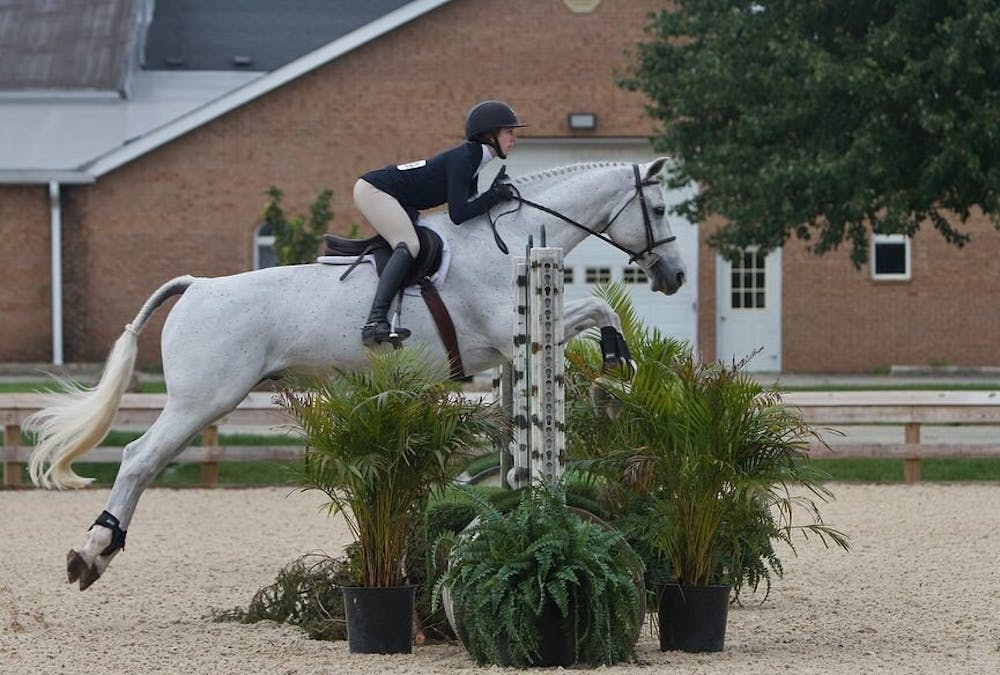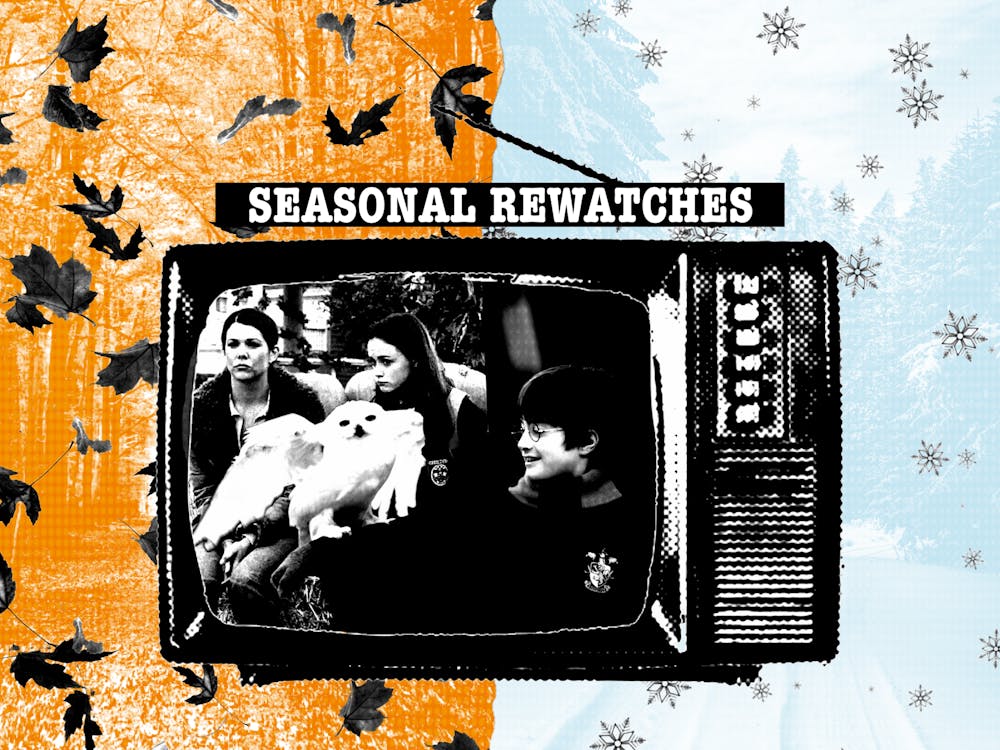Miami’s equestrian team may be nationally recognized, but it’s easy to forget about the animals that make it all possible.
Baron is a flea-bitten gray (this is the horse’s breed, not its condition) horse at Miami’s equestrian center. He wakes up every morning to eat his breakfast at 6 a.m. before getting his hair brushed and hooves cleaned.
At some point throughout the day, Baron will get to go out to the pasture. He will also have a one-hour lesson with one of the equestrian team members, although it looks a little different than it has in previous years.
While the spring transition to remote learning brought changes to students’ lives, it also affected Baron and the other horses.
Before students were sent off campus, half of the horses had been practicing with the equestrian team while others worked with students in a kinesiology and health (KNH) class for horseback riding.
Then one day, the students and riders were all gone. The only people that came to the barn were five full-time staff members at the equestrian center. The horses were no longer working every day.
Most of the 48 horses stayed in the equestrian center. During the summer, some were leased out to a private farm for riding.
While everyone was in quarantine, the horses were out of work. In the summer, full-time staff started training them again with shorter, lighter lessons to get them back in shape.
The horses really started practicing at the end of August when some of the riders returned to campus.
It had been a long time, though. And in a pandemic, everything, including horseback riding, has to adapt.
Now, all of a horse’s equipment is left outside of its stall rather than in an equipment room in order to reduce touch points in the barn.
On weekdays, there are usually six to eight lessons per day. Now, due to less students on campus and no riding classes this semester, there are only four. This gives staff more time to clean between lessons and allows riders to be more spread out throughout the day.
Enjoy what you're reading?
Signup for our newsletter
Heather Pinnick, Miami’s director of riding, is unsure how lessons will look when more students come on campus but says the system is working for now.
“We may have to add another lesson in later or earlier to accommodate that,” she said.
Back at the stables, the horses prepare for their activity. Once their equipment is on, the horse starts their lesson for the day. Usually they will have two lessons per week, and each lesson will be with a different, randomly assigned rider.
The horse’s lessons depend on what riding discipline it competes in. The disciplines are hunt seat (jumping), Western and dressage. Many horses compete in more than one.
Lessons now include warming up the horse by riding it around and doing exercises that teach the horses cues that tell them what to do.
Each week, however, the lessons change more to fit the horses’ needs as they are relearning.
For Baron, that’s mostly hunt seat and sometimes dressage.
“[Baron’s] been coming back into work from being off for a long period of time, so I try and just let him do his thing … and just go forward,” said team president Shannon Allen. Baron is her favorite horse to ride.
Although the team is not competing in any shows this semester, it’s important to keep the horses and riders in practice.
Because they won’t be attending competitions, there are little things the riders and horses will miss out on, like Baron’s favorite treats.
“His favorite treat is a doughnut, so whenever we go to shows … I always get him a pack of doughnut holes,” said Allen.
After lessons, the horses get rinsed off and the equipment sanitized. Most of the horses get turned out to the pasture at night and not during the day because they don’t like the heat and bugs.
They go out to pasture in groups of six to eight that Pinnick calls “turnout friends.”
“They are somewhat like people in their personality,” she said. “Some of them are real mellow and get along with everyone, and some of them are a little more dominant in their personality, so we try to find groups they get along with.”
After a day of lessons and hanging out in the pasture or sticking his head out his stall window, Baron settles in and gets ready for the next day.




